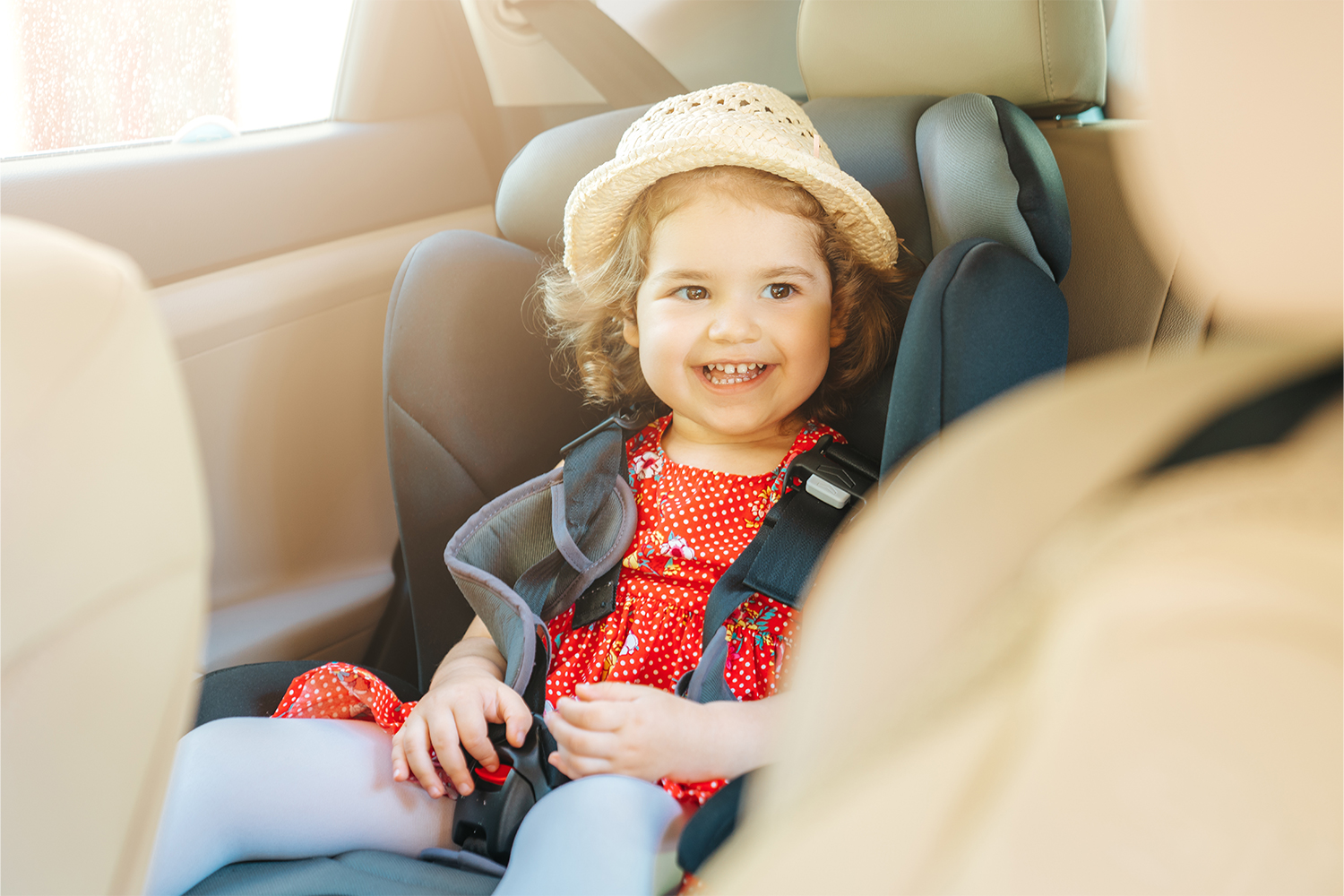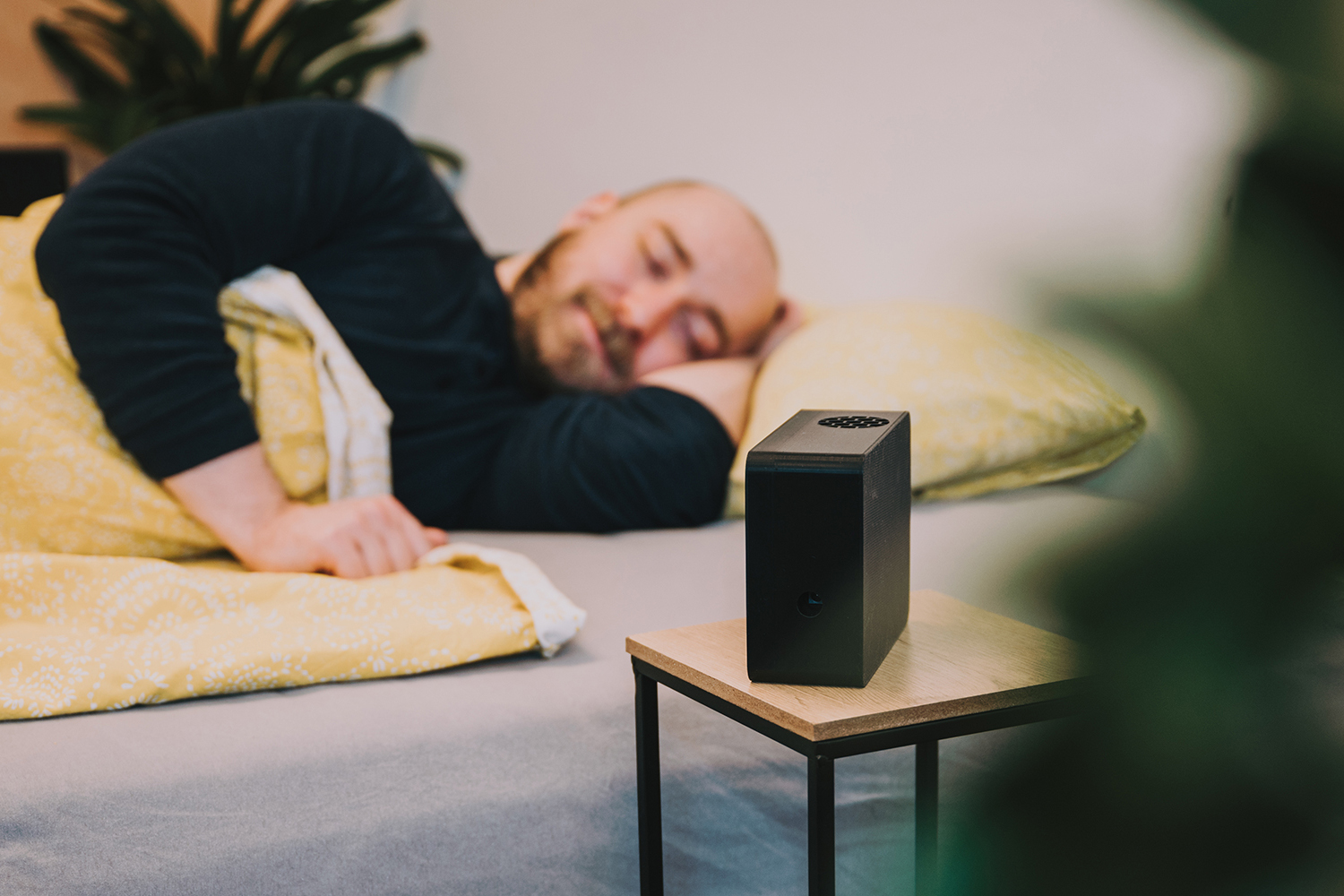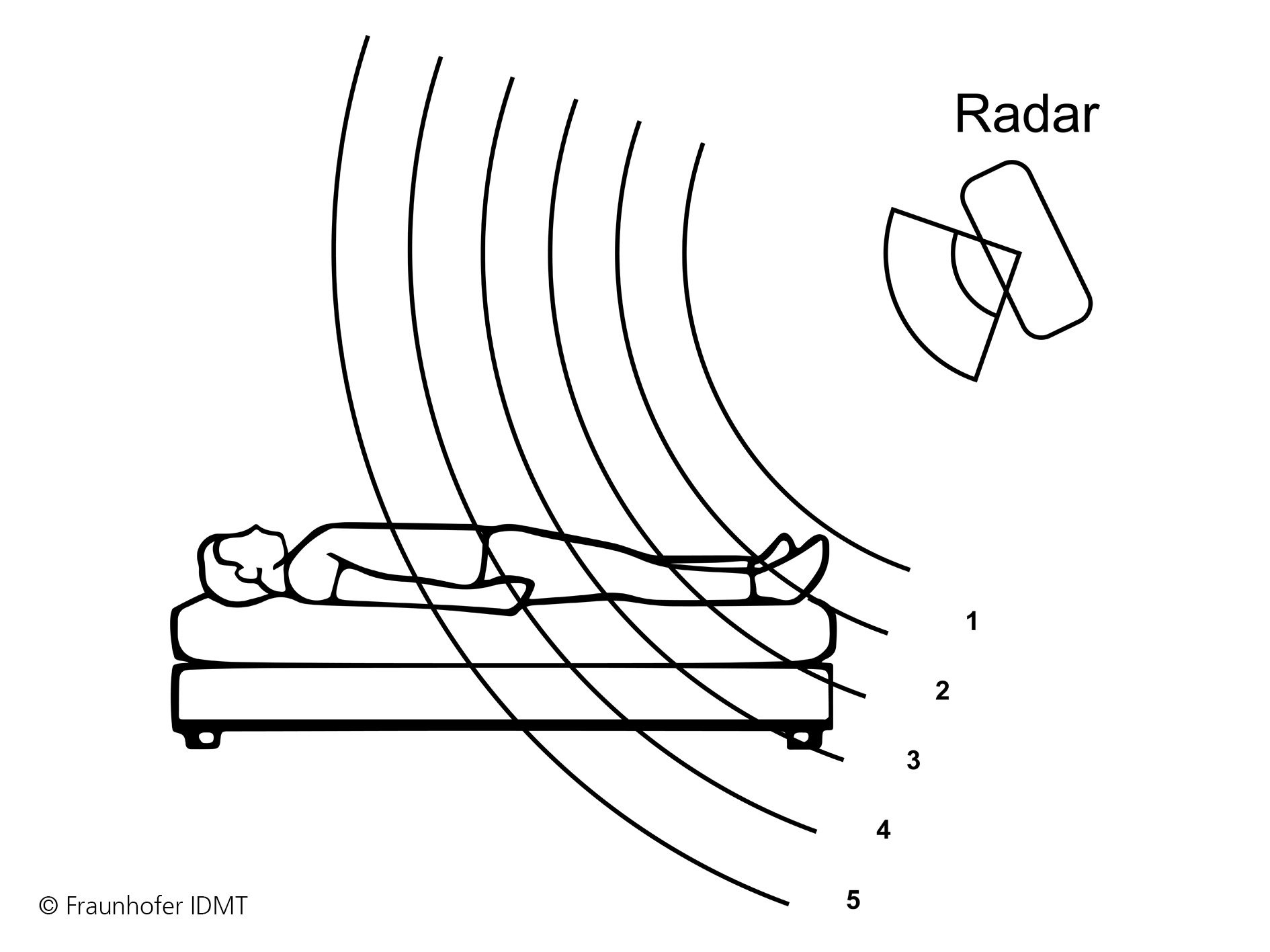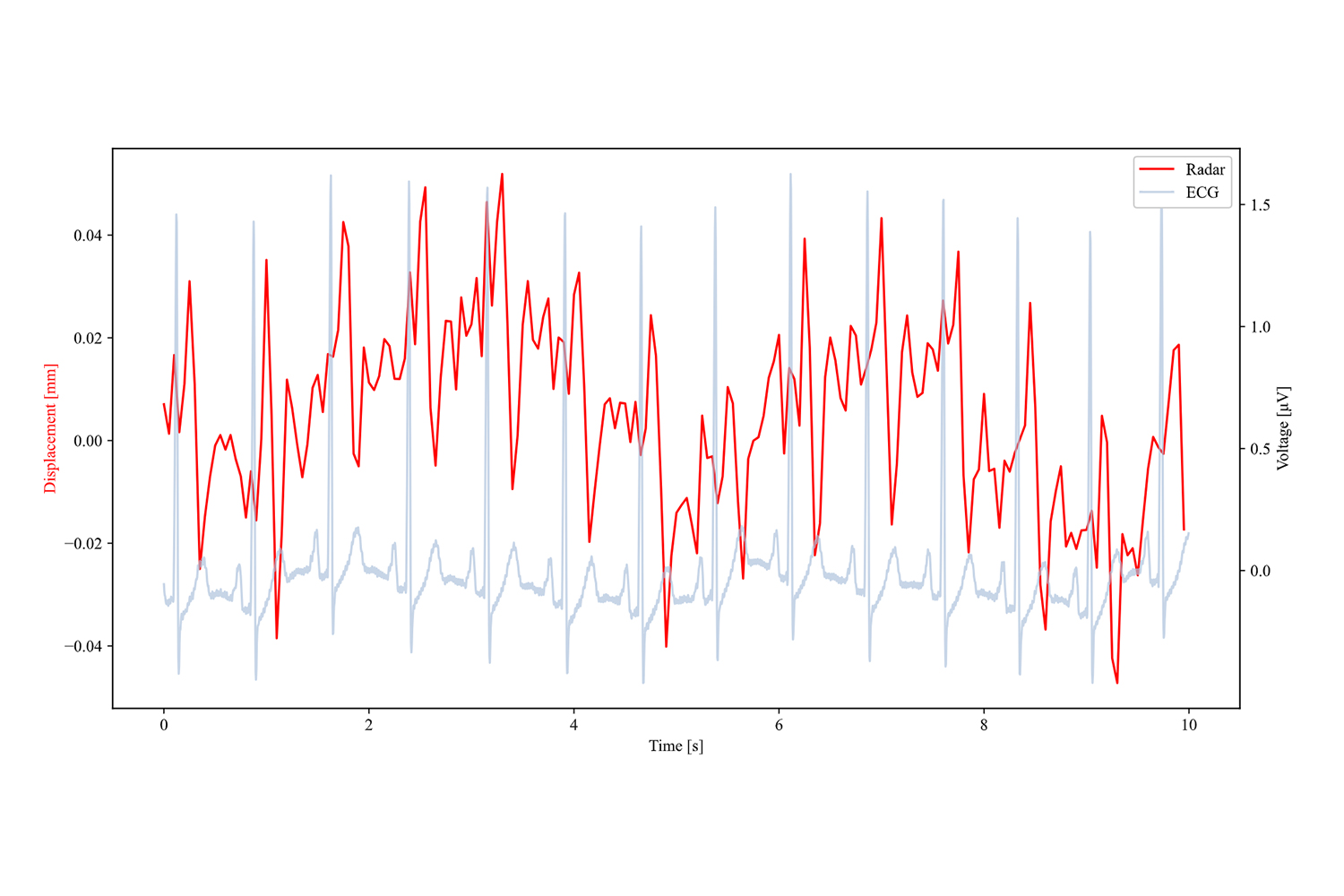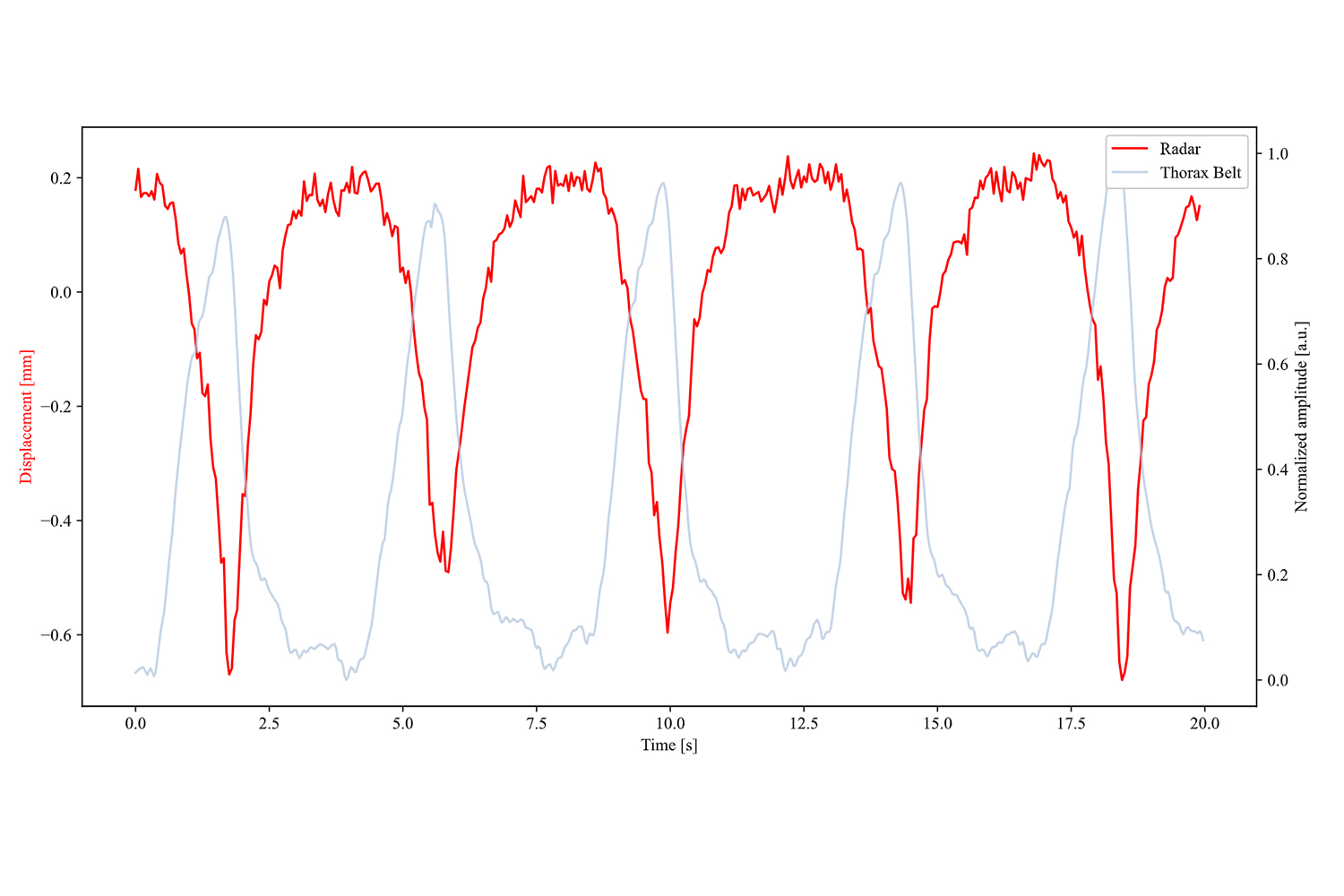Respiration pauses during sleep, critical vital parameters of an infant or the necessary monitoring of respiration and heart rate in the intensive care unit and in nursing: There are many good reasons for recording vital data. One solution is contactless monitoring using radar. By using a non-contact device, one reduces the effort compared to contact-based sensors. There is no need to disinfect, attach or make necessary adjustments to the sensors - just as there is no need for constant pressure on the body. A radar measures vital and movement parameters of the human body without contact and is therefore particularly suitable for monitoring over longer periods of time. The special feature at Fraunhofer IDMT: When the sensor is positioned laterally relative to the person, individual body sections can be examined independently to record vital parameters. This means that respiratory movements on the torso and pulse movements on the legs, for example, can be recorded separately. Subsequent separation by complex evaluation procedures is not necessary. This is interesting, for example, for the detection of chronic obstructive pulmonary disease (COPD) or sleep apnea, in which abdominal and thoracic breathing can be asynchronous. Limb movements can also be recorded.
In the REMUS project ("Respiration Measurement Using Sensors"), the initial focus was on detecting respiration using radar. Following the project duration, the technology was further developed in such a way that other vital parameters can now be detected by the targeted positioning of the radar. The Fraunhofer-Gesellschaft has applied for a patent for the described method (patent number: 102022208945.6).
 Fraunhofer Institute for Digital Media Technology IDMT
Fraunhofer Institute for Digital Media Technology IDMT

